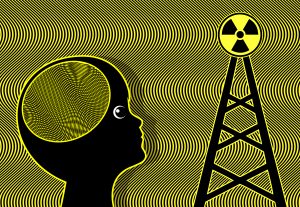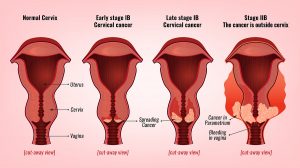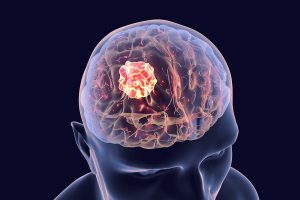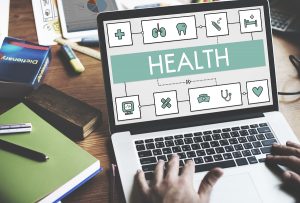The distribution of obesity in women and men is different, when they gain weight on a low fat/high carb diet. The distribution of fat follows a pear shape in women due to fat accumulated around the hips. In males excessive fat accumulates around the waist, which gives them an apple shape appearance.
Researchers at the University of California, Riverside (UCR) have done experiments using a mouse model. They wanted to see what changes take place when obesity develops. Djurdjica Coss was the lead researcher of the study from the UCR School of Medicine.
The reason why this study was thought to be necessary
Many men and women have relatively normal weights until their mid 50’s. But when women approach menopause, they tend to accumulate fat in the thigh areas (pear-shape obesity). When their weight continues to rise, they also accumulate weight in the abdominal area. It is general knowledge that the fat in the abdominal region is metabolically more active producing inflammatory kinins.
Men above the age of 50 or 60 are also accumulating fat, but typically in the abdominal area right away. The name for this is apple-shape obesity. Unfortunately this is the fat we just discussed, metabolically active with inflammatory kinins. It is known to be the cause for heart attacks and strokes as it accelerates hardening of the arteries in the whole body. Dr. Coss found in doing experiments on mice that estrogen plays a major role in the development of obesity as discussed below.
The mouse experiments to study the development of obesity
The research team of Dr. Coss compared a group of mice that had their ovaries taken out. The ovaries in females are the main source of estrogens. They fed them a high-fat diet comparing their weight gain to that of male controls on the same diet. Obesity leads to a change in metabolism, called metabolic syndrome. This condition has an association with the production of inflammatory substances originating from the abdominal fat accumulation. Both male and female mice underwent a series of blood tests. They were also physically inspected. The female mice had the pear-type accumulation of fat, the males an apple-type fat accumulation.
More details about what obesity did to the experimental mice
In males there was a reduction of sperm count in the obese group as well as low muscle strength. In addition they were low in energy, had a lack of libido and their testosterone levels were low. The sperm number and the testosterone level had fallen to 50% of what they were when their weight was normal. This is what happens in human obese males as well. The inflammatory substances, that the abdominal fat creates, broke down the blood/brain barrier, and this affected the brain.
Among the female mice there was no neuroinflammation in the brain. There was no change in their hormones, which was quite a remarkable finding. This was a surprise and points out that beside estrogens there are other mechanisms to protect females from the effects of obesity.
Brain inflammation from obesity
Dr. Cross explained that in male mice the fat accumulation was of the apple-type. Female mice had the pear type fat accumulation. The fatty tissue in females did not release inflammatory kinins. On the other hand, the abdominal fat in the males released inflammatory kinins. These attracted macrophages, which is a cell type of the immune system. Activated macrophages now became aggressive and broke down the blood/brain barrier. This resulted in neuroinflammation of the brain. The brain normally is an immune protected site because of the blood/brain barrier. When this breaks down because of the action of inflammatory kinins from abdominal fat, the brain starts to develop memory loss like in Alzheimer’s disease.
Women before and after menopause
In females who still produce enough estrogen, fat from the pear type obesity distribution does not produce inflammatory kinins. This explains the relative protection of premenstrual women from heart attacks and neuroinflammation. But menopausal women start accumulating fat around the abdomen as well. At that point they can also develop inflammatory kinins and neuroinflammation. This is why the heart attack and stroke rate increases in postmenopausal women with apple-shape obesity.
Other studies supporting the effects of obesity in men and women
Inflammatory substances in obese people affecting their brain
This publication shows that in a group of 141 neurologically healthy obese individuals the anti-inflammatory defense in the brain was weakened. Subsequently, various brain conditions developed because of the inflammatory substances affecting the brain.
How obesity affects your body functions
Obesity affects the body in various ways. It is particularly the apple type obesity that causes inflammatory substances circulating in the blood. A multitude of conditions can develop from this.
- The cholesterol shows an increase of the bad LDL cholesterol and a reduction of the good HDL cholesterol.
- The blood pressure rises. Without treatment high blood pressure can cause strokes.
- Type-2 diabetes often develops because the insulin production cannot keep up with the demand. A second factor is a loss of insulin receptor sensitivity. As a result the insulin receptors of the body cells become resistant to insulin.
- The gallbladder often develops stones, which may require gallbladder surgery.
- Some cancers are increasing in frequency: endometrial cancer, breast, colon, kidney, gallbladder, and liver cancer.
- Anxiety, depression and other mental disorders are more common, in part because of the neuro-inflammatory processes that I mentioned before.
- Body pain and problems with physical functioning: obese people have more back pains, hip and knee pains from the extra weight. Slim people are less likely to have these problems. Obese people require more hip and knee replacement surgeries for end-stage arthritis than slim people.
Difference of metabolism in pear-shape versus apple-shape obesity
Back to the pear versus apple distribution of fatty tissue in obesity. diabetes, heart disease, high blood pressure and strokes as the apple type obesity. The difference in metabolism between the two is explained in detail here.
Conclusion
You may have heard that women tend to accumulate fat more around their hips, possibly because of hormonal factors. This is a pear-type fat distribution. In men who turn obese the fat accumulation follows an apple pattern. This type has a more aggressive metabolism in the fat tissue with inflammatory kinins accessing the blood circulation. It also affects the blood/brain barrier. Normally this barrier does not allow proteins to enter the brain. But when a person is obese, inflammatory kinins and proteins can enter the brain freely causing mental illnesses like depression and anxiety. Many obese people also develop type-2 diabetes leading to heart attacks and strokes.
Low fat diet from the 1980’s
The low fat diet of the 1980’s has caused a lot of obesity around the world. The problem is that merchants who provide low fat products have replaced fat with refined sugar. The liver converts refined sugar into fatty acids and triglycerides. These end up as fatty tissue. Given enough time this is causing obesity. Those who are obese need to cut out refined sugar in its many disguises. In addition they also need to cut down their starchy food intake. In the gut starchy foods break down into sugar.
When you cut out sugar and starchy foods, a person will typically lose 50 pounds in 3 months, at which point they have lost the label of “obesity”. They will also feel more energetic. The best advise for you is to maintain your weight loss with a Mediterranean diet. Research studies have shown that it is beneficial and anti-inflammatory.















